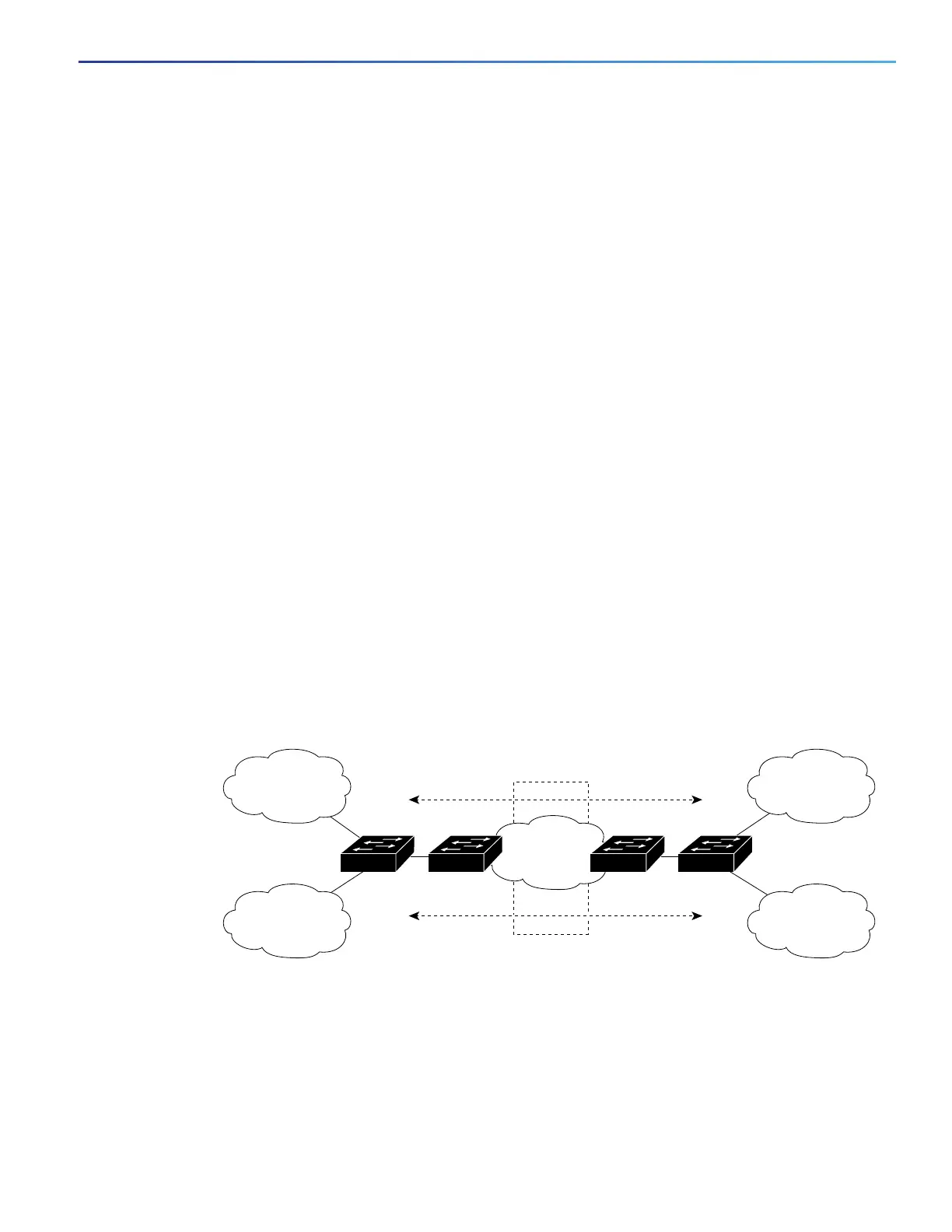895
Configuring IP Unicast Routing
Configuring Multi-VRF CE
Information About Multi-VRF CE
Multi-VRF CE allows a service provider to support two or more VPNs, where IP addresses can be overlapped among the
VPNs. Multi-VRF CE uses input interfaces to distinguish routes for different VPNs and forms virtual packet-forwarding
tables by associating one or more Layer 3 interfaces with each VRF. Interfaces in a VRF can be either physical, such as
Ethernet ports, or logical, such as VLAN SVIs, but an interface cannot belong to more than one VRF at any time.
Note: Multi-VRF CE interfaces must be Layer 3 interfaces.
Multi-VRF CE includes these devices:
Customer edge (CE) devices provide customers access to the service-provider network over a data link to one or
more provider edge routers. The CE device advertises the site local routes to the router and learns the remote VPN
routes from it. The Cisco Connected Grid switch can be a CE.
Provider edge (PE) routers exchange routing information with CE devices by using static routing or a routing protocol
such as BGP, RIPv2, OSPF, or EIGRP. The PE is only required to maintain VPN routes for those VPNs to which it is
directly attached, eliminating the need for the PE to maintain all of the service-provider VPN routes. Each PE router
maintains a VRF for each of its directly connected sites. Multiple interfaces on a PE router can be associated with a
single VRF if all of these sites participate in the same VPN. Each VPN is mapped to a specified VRF. After learning
local VPN routes from CEs, a PE router exchanges VPN routing information with other PE routers by using internal
BGP (IBPG).
Provider routers or core routers are any routers in the service provider network that do not attach to CE devices.
With multi-VRF CE, multiple customers can share one CE, and only one physical link is used between the CE and the PE.
The shared CE maintains separate VRF tables for each customer and switches or routes packets for each customer based
on its own routing table. Multi-VRF CE extends limited PE functionality to a CE device, giving it the ability to maintain
separate VRF tables to extend the privacy and security of a VPN to the branch office.
Figure 104 on page 895 shows a configuration using Cisco Connected Grid switches as multiple virtual CEs. This
scenario is suited for customers who have low bandwidth requirements for their VPN service, for example, small
companies. In this case, multi-VRF CE support is required in the Cisco Connected Grid switches. Because multi-VRF CE
is a Layer 3 feature, each interface in a VRF must be a Layer 3 interface.
Figure 104 Switches Acting as Multiple Virtual CEs
When the CE switch receives a command to add a Layer 3 interface to a VRF, it sets up the appropriate mapping between
the VLAN ID and the policy label (PL) in multi-VRF-CE-related data structures and adds the VLAN ID and PL to the VLAN
database.
When multi-VRF CE is configured, the Layer 3 forwarding table is conceptually partitioned into two sections:
The multi-VRF CE routing section contains the routes from different VPNs.
VPN 1
VPN 2
VPN 1
VPN 2
CE2PE1 PE2
Service
provider
CE1
CE = Customer-edge device
PE = Provider-edge device
101385
